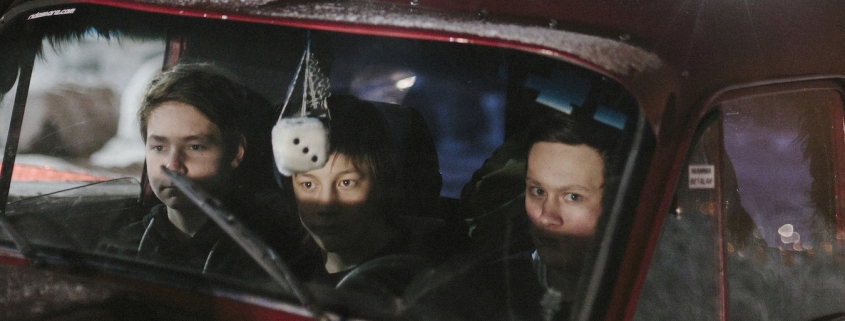NIGHT TIME TREMORS.
PSYCHOGRAMS OF A CITY
Katrin Streicher
STATEMENT
Katrin Streicher’s series Night Time Tremors was created between 2014 and 2017 in the northernmost city of Sweden. Kiruna was founded under its current name in 1900 and has since then served to mine iron ore. To this day, the city follows the parameters of the Swedish mining company LKAB, which has decided to relocate Kiruna due to large iron ore deposits below the city centre. The explosions, which are used to extract the precious magnetite in the underground, are triggered after midnight and make the city tremble – hence the title of the series.
Although the ongoing migration marks a tragic turning point for the humans living and working in Kiruna, Katrin Streicher’s intention is neither to evaluate the situation nor to take position within the current discourse. As a visual anthropologist, she is compiling material in order to describe the human condition in a certain moment going through a time of upheaval. Nonetheless, the quake and the darkness, impermanence and uncertainty are symptomatic of Kiruna and the series of Night Time Tremors. It thus becomes a kind of psychogram of the city’s instability, a city, which is threatened to sink. Most of the photographies seem like film stills, neat, self-contained, composed and framed as tableaux, but these are not dramatically staged scenes – the photographer has approached the place and moment with special sensibility in order to capture the city of Kiruna and its inhabitants from a decidedly personal and artistic point of view.
The artist makes us become observers of low-traffic streets, of houses in which no light burns, which may be uninhabited by now. This perceived agony is intensified by the glaring street lamps, whose light illuminates nothing but the snow, the empty house facades and the objectively ironic motorboat, which makes the surrounding black of the night stand out all the more conspicuously and underlines a feeling of absence. Loneliness and lack of communication, a palpable silence is predominant in the street shots, the portraits and the still lifes. The individual fates of the people of Kiruna illustrate in particular the house interiors, shaped by the people who live in them. In one of these still lifes, Giovanni Bragolin’s weeping boy looks at us, forming part of a house’s interior as if somebody had foreseen his destiny. Below the picture an idyllic village landscape and next to it a mirror, reflecting stairs that seem to lead into the unknown. A layer of powerlessness covers the portrayed Kirunians, whose lives in Kiruna go on and are shaped by the oscillations recorded by the LKAB geophones, a device that looks like a relic from a post-apocalyptic movie.

